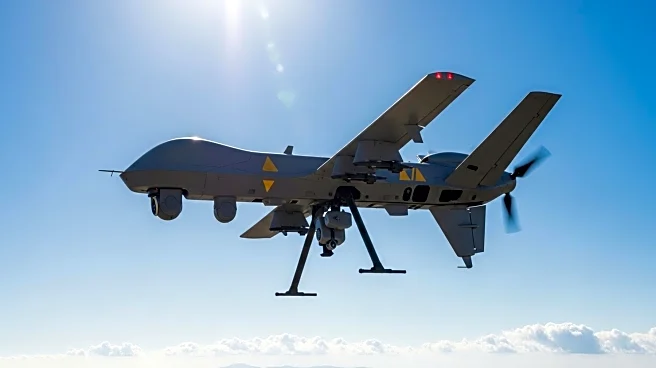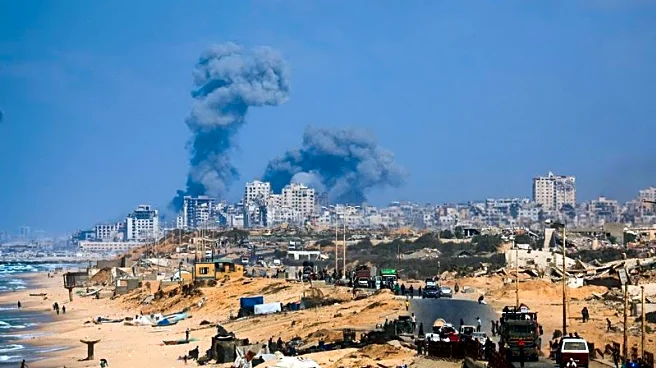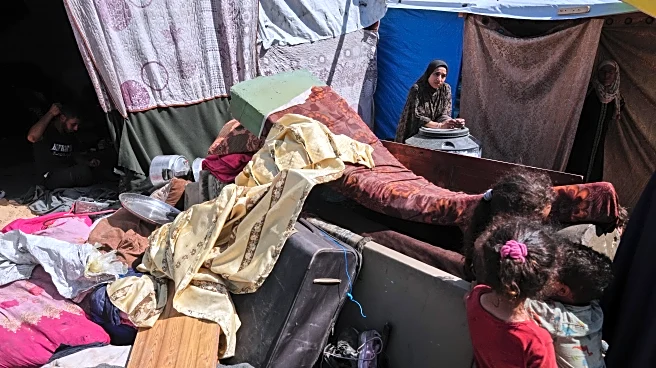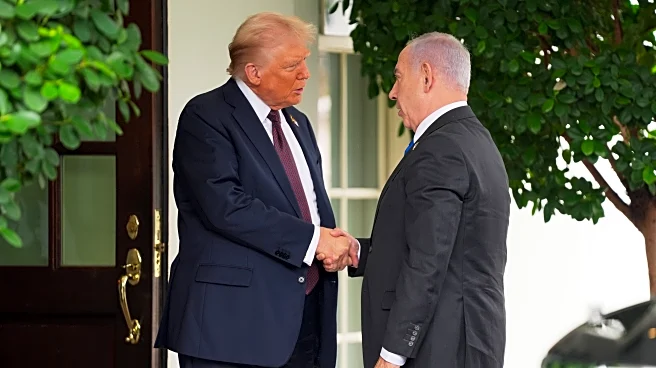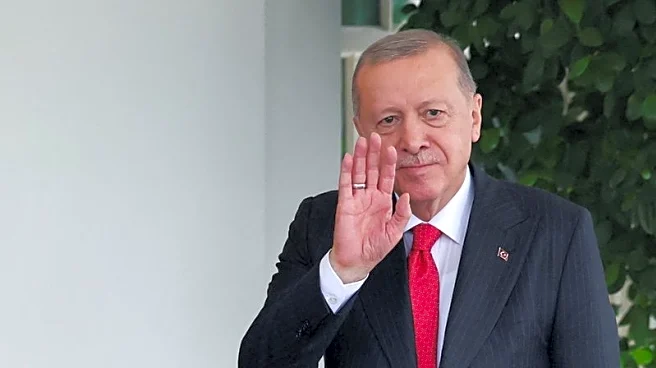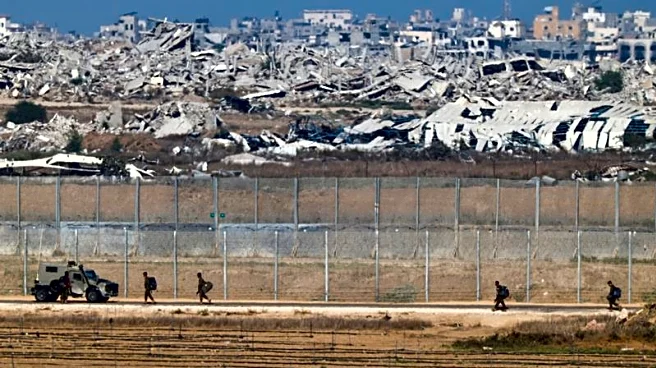What is the story about?
What's Happening?
IDF Chief of Staff Lt. Gen. Eyal Zamir visited Gaza, highlighting preparations for the 'twilight days' of the conflict as Israel considers a U.S.-brokered ceasefire plan. The proposal, announced by President Trump and Prime Minister Netanyahu, aims to end the Gaza war by exchanging Israeli hostages for 250 Palestinian prisoners and disarming Hamas. The plan includes international oversight to dismantle militant tunnels and infrastructure. While families of hostages view the announcement as a breakthrough, Hamas has expressed strong opposition, labeling the terms as a 'declaration of defeat.' American officials are urging Hamas to respond swiftly, with President Trump indicating a limited negotiation window.
Why It's Important?
The proposed ceasefire plan could significantly alter the geopolitical landscape in the region, potentially reducing hostilities and fostering stability. The disarmament of Hamas and international oversight could mitigate future threats to Israel, while the release of hostages addresses humanitarian concerns. However, Hamas's opposition suggests potential challenges in implementation, which could prolong conflict and negotiations. The involvement of international monitors may also influence regional dynamics, affecting relations between Israel and neighboring countries.
What's Next?
Hamas's response to the proposal is crucial, with consultations ongoing among Gaza-based factions. The plan's acceptance could lead to a phased ceasefire and deployment of international forces, while rejection might escalate tensions. Qatar and Turkey's involvement in mediation could play a pivotal role in shaping outcomes. The IDF remains vigilant, preparing for potential last-minute actions by Hamas. Political approval in Israel hinges on Hamas's acceptance, with Netanyahu expected to face resistance from his coalition.
AI Generated Content
Do you find this article useful?
